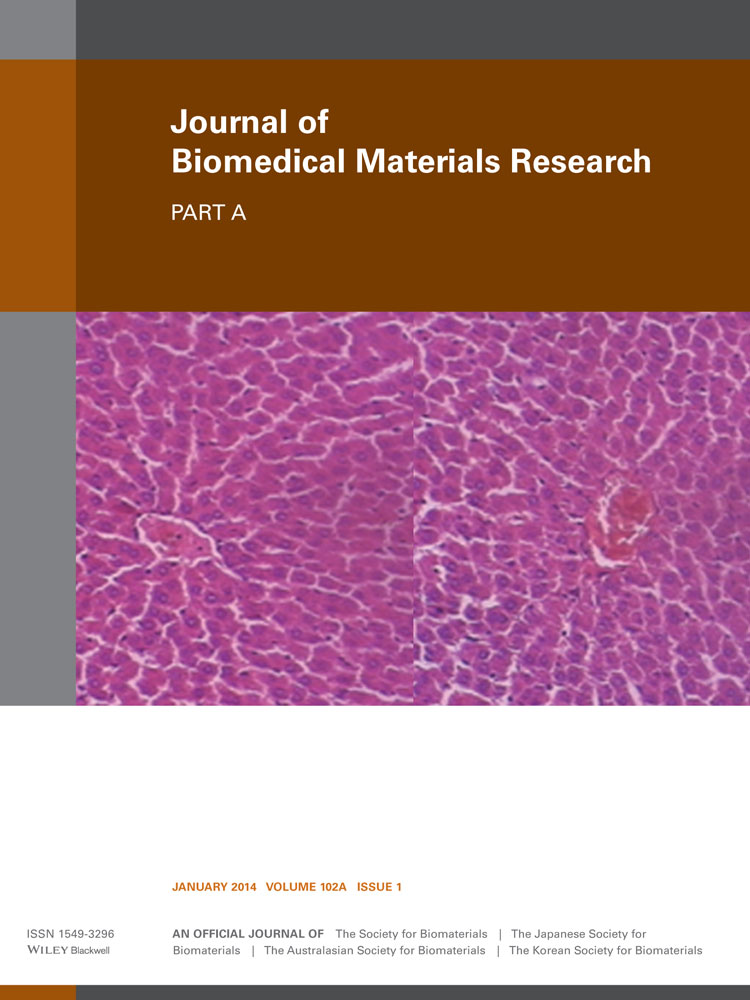Tantalum oxide and barium sulfate as radiopacifiers in injectable calcium phosphate-poly(lactic-co-glycolic acid) cements for monitoring in vivo degradation
Abstract
Monitoring the degradation of calcium phosphate-based bone substitute materials in vivo by means of noninvasive techniques (e.g., radiography) is often a problem due to the chemical resemblance of those substitutes with the mineral phase of bone. In the view of that, the present study aimed at enhancing the radiopacity of calcium phosphate cement enriched with poly(lactic-co-glycolic acid) (CPC-PLGA) microspheres, by adding tantalum oxide (Ta2O5) or the more traditional radiopacifier barium sulfate (BaSO4). The radiopacifying capacity of these radiopacifiers was first evaluated in vitro by microcomputed tomography (μCT). Thereafter, both radiopacifiers were tested in vivo using a distal femoral condyle model in rabbits, with subsequent ex vivo μCT analysis in parallel with histomorphometry. Addition of either one of the radiopacifiers proved to enhance radiopacity of CPC-PLGA in vitro. The in vivo experiment showed that both radiopacifiers did not induce alterations in biological performance compared to plain CPC-PLGA, hence both radiopacifiers can be considered safe and biocompatible. The histomorphometrical assessment of cement degradation and bone formation showed similar values for the three experimental groups. Interestingly, μCT analysis showed that monitoring cement degradation becomes feasible upon incorporation of either type of radiopacifier, albeit that BaSO4 showed more accuracy compared to Ta2O5. © 2013 Wiley Periodicals, Inc. J Biomed Mater Res Part A: 102A: 141–149, 2014.




